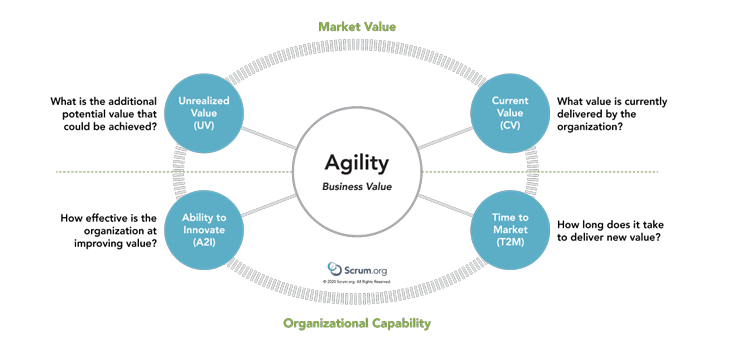Agile frameworks such as Scrum have revolutionised the way products are developed and delivered. One of the key concepts behind these frameworks is the role of the Product Owner. As stated in the Scrum Guide, the Product Owner is responsible for maximising the value of the product resulting from the work of the Scrum Team. In other words, the Product Owner is the person who ensures that the product being developed is aligned with the overall vision of the company and delivers value to the end users.
Traditional product development focuses on the delivery of features. This approach entails creating a list of must-do items that must be completed before a product can be shipped. The order in which these items are developed is arbitrary, and all items will be completed regardless of the value they add. Success, traditionally, is measured by the delivery of the feature rather than the value it provides to the end user.
In contrast, Agile product development focuses on the product itself. Prioritising the order in which items are delivered is the primary tool for delivering the most value early in the lifecycle. Gathering feedback from users, customers, and stakeholders frequently is also critical to affirm that the product being delivered is the right thing. Measuring value and checking Key Value Measures (KVM) is also essential to validate assumptions about what is valuable. Success is measured by the improvement of a KVM.

All products exist for a purpose, and there should be clear statements of what success looks like. If a product owner owns “checkout” for a shop, they are interested in reducing the dropout rate and maximising the number of users who register account details. If they own a meditation app, they are interested in increasing installs, app store reviews, user stickiness, and perhaps how chilled the users are. Therefore, the product owner must ensure that each item they deliver brings them closer to delivering value.
By focusing on value, the Product Owner has more flexibility on when to ship. It forces the product owner to test their assumptions early by testing the market. They deploy and gather feedback. Focusing on features reduces the need to ship, creating a “ship it when it is all there” attitude. However, products only accrue benefits that are being used. Therefore, it is essential to ensure that every feature delivered adds value to the end user.
Focusing on delivering features is disempowering as it creates a “here’s a list of things someone else has decided upon. Now make it happen” attitude. However, focusing on value makes the product owner accountable and is empowering as it creates a “Hey, you’re intelligent; we need to reduce dropout. How will you do that?” attitude. In other words, it gives the product owner the freedom to decide what should be delivered and when based on what will deliver the most value.
The best way of increasing the value your teams deliver is by not delivering items that have low value. By transforming feature owners into product owners, companies can improve the productivity of their organisations. This transformation allows Product Owners to align the product being developed with the overall vision of the company and ensure that every item they deliver adds value to the end user. This approach is critical for success in today’s rapidly changing business environment.
As a Product Owner, there are several ways you can increase your influence and take more ownership of your product. Here are five strategies to consider:
Build relationships with key stakeholders: As a Product Owner, it's essential to build strong relationships with key stakeholders, including customers, team members, senior executives, and other departments within the organisation. By establishing rapport and trust, you can better communicate your vision for the product, gain support for your ideas, and demonstrate your expertise and knowledge.
Focus on user feedback: To increase your influence as a Product Owner, you must have a deep understanding of your users' needs and preferences. Regularly collect feedback from users and use it to inform your product development decisions. Demonstrating that you have your customers' best interests in mind can help build trust and increase your credibility.
Be data-driven: Use data to guide your decision-making process. By analysing key performance metrics and using A/B testing to test different product features, you can make informed decisions that are supported by data. This can help you gain buy-in from stakeholders and build credibility as a Product Owner.
Be proactive: Don't wait for others to tell you what to do. Take ownership of your product by identifying areas for improvement and proactively addressing them. Set goals and develop a roadmap for your product, and regularly communicate progress to stakeholders.
Be a team player: Finally, as a product owner, it's essential to work collaboratively with your team. Build a culture of trust and respect and empower team members to take ownership of their areas of responsibility. By fostering a sense of ownership and teamwork, you can increase your influence and take your product to new heights.
Why not test your application of product skills in Agility In Minds Product Owner Scorecard and receive a pdf with your results.

